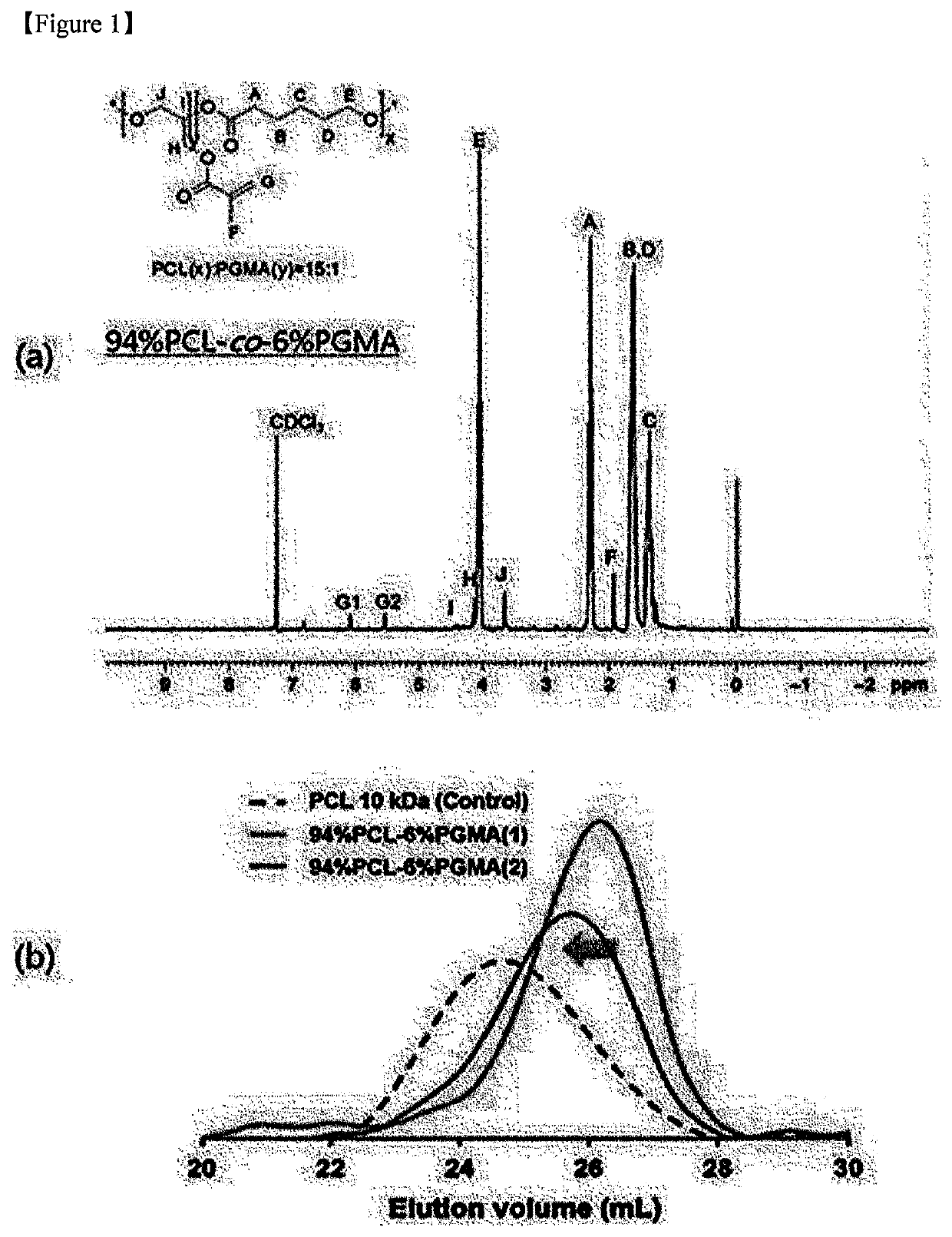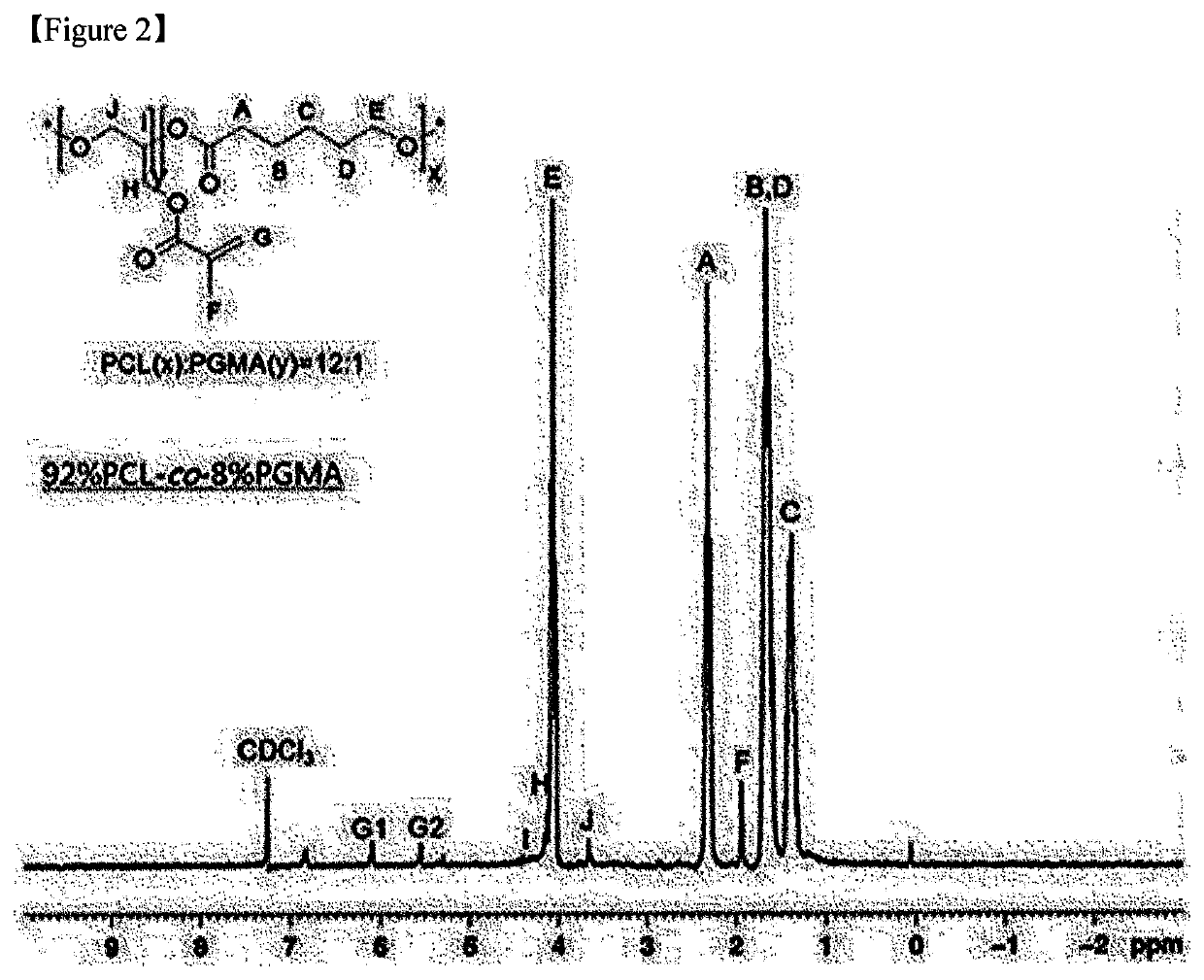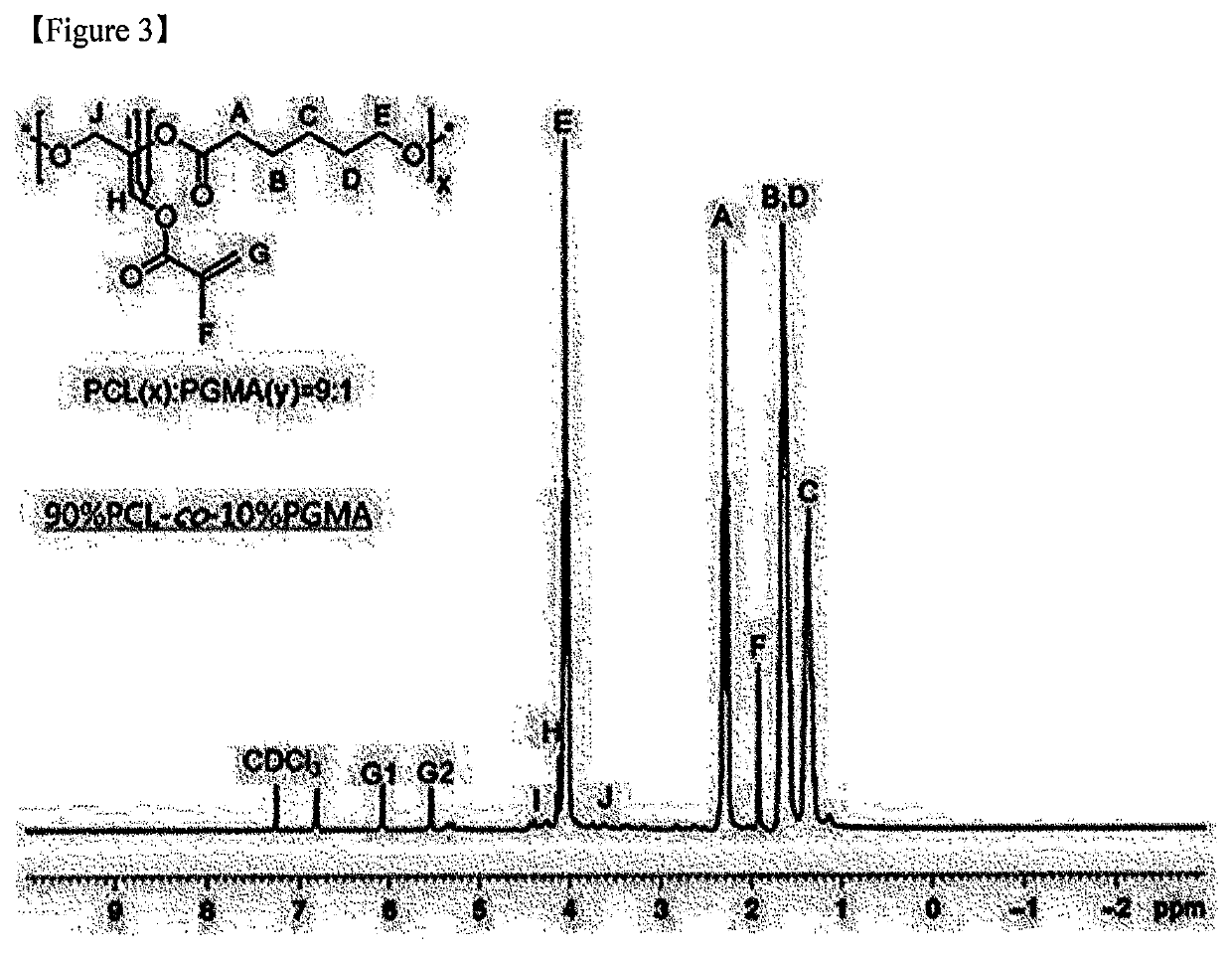Photo-cross-linkable shape-memory polymer and preparation method therefor
- Summary
- Abstract
- Description
- Claims
- Application Information
AI Technical Summary
Benefits of technology
Problems solved by technology
Method used
Image
Examples
experimental preparation
1: Samples and Devices
[0095]ϵ-caprolactone (CL), hydroquinone (HQ), 1,5,7-triazabicyclo[4.4.0]dec-5-ene (TBD), glycidyl methacrylate (GMA), acetonitrile, chloroform, dichloromethane, diethyl ether, 2,2-dimethoxy-2-phenylacetophenone, and 1,6-hexanediol (HD) were purchased from Sigma-Aldrich.
[0096]Meanwhile, the melting point and the heat of fusion were measured from a mass of a sample ranging from 5 to 10 mg in an aluminum pan using differential scanning calorimetry (DSC) equipment (commercially available from TA Instrument Inc.). Then, the rate of a lamp was 10° C. / min, and measured once at a temperature ranging from −80° C. to 100° C. (including a constant temperature for 3 minutes).
[0097]In addition, the number-average of molecular weight (Mn) was measured using gel permeation chromatography (GPC) equipment (commercially available from Shimadzu Scientific Instruments Inc.). In this case, the columns used were Shodex 802, 803, and 804, the solvent used was chloroform, and the flow...
example 1
Synthesis of PCL-co-PGMA Shape-Memory Polymer
1-1: Synthesis of 94%PCL-co-6% PGMA
[0099]The following reactant input ratio of [CL]0 / [GMA]d[HD]0 / [TBD]0 / [HQ]0=90 / 10 / 1 / 1 / 0.5 was used to synthesize 94%PCL-co-6% PGMA (see Table 1).
TABLE 1CLGMAHQTBDHD(mmol)(mmol)(mmol)(mmol)(mmol)Example 1-19010110.5
[0100]First, CL (90 mmol, 9.97 mL), HD (0.5 mmol, 60 mg), and HQ (1 mmol, 110 mg) were put into a glass reactor (250 mL) and mixed, and then GMA (10 mmol, 1.36 mL) was injected into the glass reactor 10 minutes later.
[0101]Then, when an inner temperature of the glass reactor in which the two monomers were mixed was judged to be thermally stabilized, TBD (1 mmol, 140 mg) was dissolved in 1 mL of acetonitrile as the catalyst for inducing the simultaneous ring-opening polymerization of CL and GMA. Thereafter, the resulting mixture was injected into the glass reactor, and stirred at 110° C. for 2 hours. The entire procedure was performed under high-purity nitrogen.
[0102]After the reaction, the react...
example 2
of PCL-co-PGMA Shape-Memory Polymer
[0118]Polymers were respectively synthesized at reactant input ratios of [CL]0 / [GMA]0 / [HD]0 / [TBD]0 / [HQ]0 as described below (Examples 2-1 to 2-4).
TABLE 5CLGMAHQTBDHD(mmol)(mmol)(mmol)(mmol)(mmol)Example 2-1901010.50.5Example 2-286141.40.50.5Example 2-382181.80.50.5Example 2-478222.20.50.5
[0119]Specifically, in Examples 2-1 to 2-4, CL, HD, and HQ were put into a glass reactor (250 mL), and then mixed. After 10 minutes, GMA was injected into the glass reactor (see Table 5).
[0120]In addition, when an inner temperature of the glass reactor in which the two monomers were mixed was judged to be thermally stabilized, TBD (1 mmol, 140 mg) was dissolved in 1 mL of acetonitrile as the catalyst for inducing the simultaneous ring-opening polymerization of CL and GMA. Thereafter, the resulting mixture was injected into the glass reactor, and stirred at 110° C. for 2 hours. Hereinafter, the polymerization reaction was performed in the same manner as in Example 1...
PUM
| Property | Measurement | Unit |
|---|---|---|
| Temperature | aaaaa | aaaaa |
| Fraction | aaaaa | aaaaa |
| Melting point | aaaaa | aaaaa |
Abstract
Description
Claims
Application Information
 Login to View More
Login to View More - R&D
- Intellectual Property
- Life Sciences
- Materials
- Tech Scout
- Unparalleled Data Quality
- Higher Quality Content
- 60% Fewer Hallucinations
Browse by: Latest US Patents, China's latest patents, Technical Efficacy Thesaurus, Application Domain, Technology Topic, Popular Technical Reports.
© 2025 PatSnap. All rights reserved.Legal|Privacy policy|Modern Slavery Act Transparency Statement|Sitemap|About US| Contact US: help@patsnap.com



